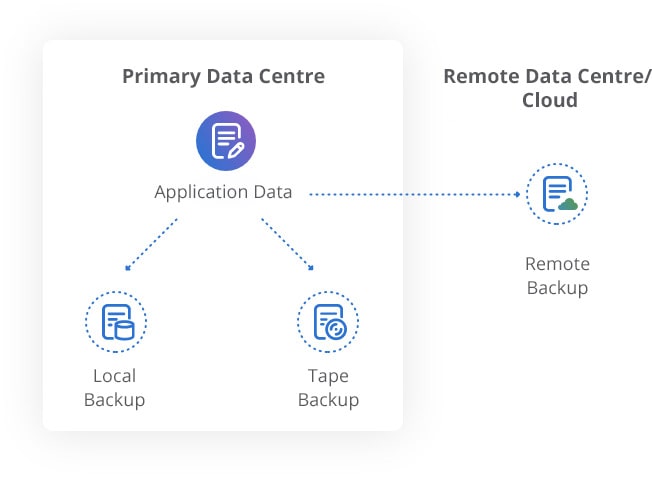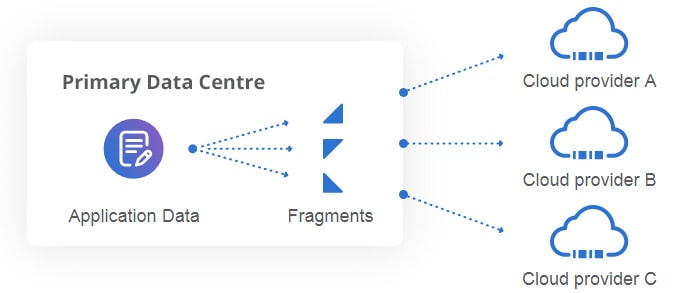FEATURES
Cloud RAID
Vault supports data durability in a similar manner as Redundant Array of Inexpensive Disks (RAID) technology, which provides highly efficient data protection using commodity storage hardware. Vault uses erasure coding (specifically, an enhanced version of Reed-Solomon Error Correction) to provide levels of data durability greater than each of the cloud storage providers and on-premises resources in which it stores data.


Erasure coding is very efficient. Vault allows you to specify the number of redundant fragments to create for each data file, as well as the subset of these fragments required to recover the original file.


For example, assume a 3:2 ratio of total number of fragments created to number of fragments needed to recover the data. This ratio results in a 50% inflation of the original data to achieve a very high degree of data durability–equivalent to making two to three whole copies of the original data.
Self-Healing Storage
Vault monitors the health of the storage infrastructure on which data fragments reside. In the event of storage provider outages, data can be reconstructed from fragments retrieved from other providers. If storage nodes are lost, Vault’s self-healing ability recovers data from the available fragments and creates new fragments to replace those that were lost. Vault then automatically distributes the new data fragments to other storage nodes so that the specified number of fragments to maintain is preserved.
Constant Availability
Distribution of data across multiple storage providers ensures that it remains available, even in the event of data centre, cloud provider and network outages.
Smart Restore
Vault allows you to maximize efficiency and reduce costs when accessing data. Vault’s Smart Restore feature lets you prioritize the storage nodes from which data fragments are retrieved, so that you can optimize performance and minimize fees associated with retrieving data from cloud storage.

